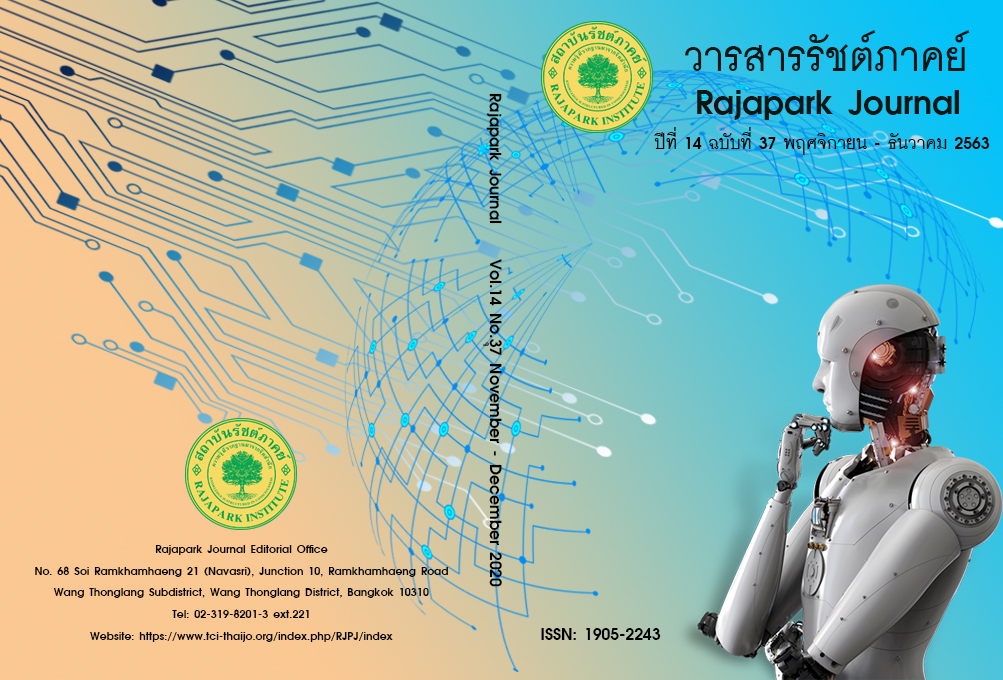Pattern Structure Policy Corruption Affecting Policy formulation of Local Administrative Organizations
Main Article Content
Abstract
This research aims to study the level of policy corruption Factors Affecting Policy-Based Corruption and Policy Formulation and the structure of the relationship between policy corruption and corruption Affecting the policy setting of the local government organization It is quantitative research. Using a survey research model the population and sample of 500 people used selective selection. Store queries they were analyzed statistically, i.e. frequency distribution, percentage, mean, standard deviation. And analyze the lisrel model the research findings were as follows: 1) The level of police corruption 2) Factors affecting policy corruption and corruption in all aspects. Policy formulation found that the process component was 0.98, the variance was 0.82, the individual side was 0.89, the variance was 0.65, the tool construction or tool change was 0.45, the variance was 0.38 policy setting. The environmental factors in the political system that influenced public policy were 0.98, the variance was 0.99, followed by the political-cultural factors, 0.96, the variance was 0.97, the alternative seeking 0.62, the variance was 0.74. Relationship between corruption the policy effect on policy-making was 0.71 percent and the forecast coefficient of the variable. Policy-setting process 1.19 percent, political-cultural factors 0.92 percent, alternative development 0.79 percent, alternative pursuit 0.75 percent, the relationship between political and administrative factors 0.59 percent, environmental factors in the political system Influencing public policy and the political participation factor was equal at 0.44 percent.
Article Details
Views and opinions appearing in the Journal it is the responsibility of the author of the article, and does not constitute the view and responsibility of the editorial team.
References
Blumer, H. (1971). Social Problems as Collective Behavior. Social Problems, 18(2), 298-306.
Friedrich, C. J. (1963). Man and His Government. New York: McGraw-Hill.
Hiranto, U. (1980). Local government. Bangkok: Odeon Store.
Intachai, D. (2010). Corruption in the appointment of local officers. Master of Public Administration Thesis, Faculty of Political Science, Ubon Ratchathani University.
Lawakul, P. (2002). Forms and Methods of Corruption Appeared in a Tambon Administration Organization in the Northeast. Term Paper, School of Social Development, National Institute of Development Administration.
Limmanee, A. et al. (2004). Corruption and misconduct in Thai government agencies, case study: Department of Local Administration Ministry of Interior. College of Government Politics, Mahasarakham University.
Paribal, C. (2003). Problems in criminal proceedings against corrupt people: under the Act on Offenses relating to Bidding to Government Agencies B.E. 2542. Bangkok: Ramkhamhaeng University.
Piriyarangsan, S., & Phongpaichit, P. (1994). Corruption and Democracy in Thailand. Bangkok: Center for Political Economy Faculty of Economics, Chulalongkorn University.
Puang-ngam, K. et al. (2006). Assessment of the Local Government Organization with Excellence in Transparency and Public Participation of the year 2006. Nonthaburi: King Prajadhipok's Institute.
Raksadee, B. (2007). The problem on citizens communion in the recall of local government administrators. Master of Laws. Faculty of Law, Dhurakij Pundit University.
Savikul, P. (2011). Corruption. Retrieved January 30, 2019, from http://www.psavikul.com/index.php?lay=show&ac=article&ld=539310860&Ntype=5
Sung, Hung-En. (2002). A convergence approach to the analysis of political aorruption: A cross-national study. Crime, Law and Social Change, 38, 137-160.
Yossomsakdi, S. (2006). Corruption, Good Governance and Ethics in Thai Society. Journal of Humanities and Social Sciences, Burapha University, 14(21), 157-175.


